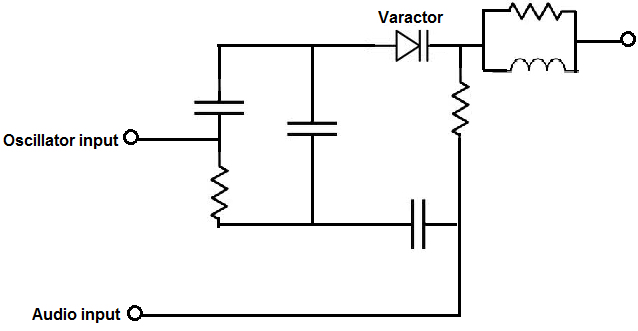Varactor Tuning Circuit- Explained

One of the most major applications for varactors are in tuning circuits, where they function to modulate (or in simple terms, vary) FM waves so that we get our different FM channels, so that you can change to different stations.
The varying of FM waves to produce different FM channels is called FM modulation.
A varactor is a special type of diode that exhibits variable capacitance when the voltage that powers it changes. A varactor has capacitance like a capacitor, and this capacitance increases when the voltage applied across it increases. When the voltage applied to decreases, the capacitance decreases. The capacitance of the varactor has a direct relationship with the voltage applied to it.
FM modulators usually use this diode to achieve FM modulation. Since a varactor functions as a voltage-controlled variable capacitor, by varying the voltage we can change the capacitance. By changing the capacitance, we change the frequency. This is because the varactor forms a network with a resistor. The RC value determines the frequency of the waveform.
Below is an oscillator circuit with a varactor:

Without getting into all the capacitors, inductor, and other components, we will just go over what the varactor does in this circuit.
The varactor is used in this oscillator circuit to vary the frequency of the waveforms produced. This oscillator circuit produces waveforms of different frequencies.
When the voltage is increased, the waveforms vibrate much faster. When the voltage is decreased, the waveforms decrease in vibrations.
Related Resources
Types of Diodes
What is a Protection Diode?
What is a Photodiode?